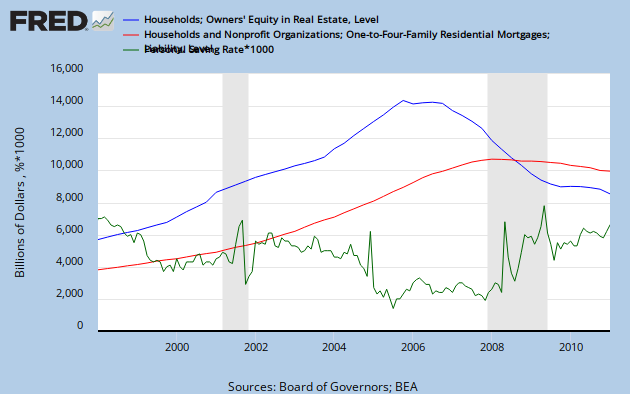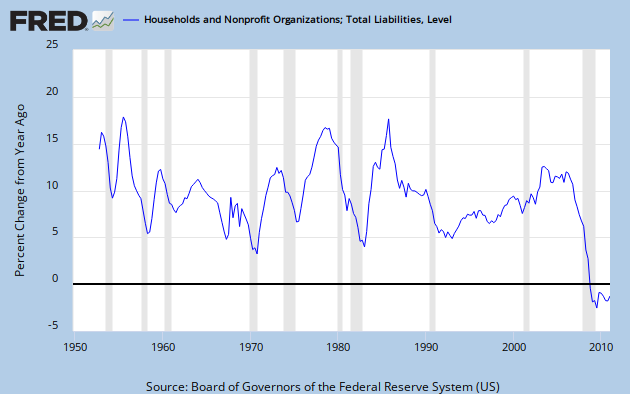The dramatic impact of the SNB's announcement refutes claims that monetary policy is currently impotent. Even in a liquidity trap, a sufficiently radical monetary shock will undoubtedly jolt an economy back towards growth. But, as if often the case, there is a fallacy of composition problem here: everybody cannot devalue at the same time—right? Buttonwood of The Economist makes the case:
It seems that all countries would like to see their currencies decline bar the Chinese who will only let the renminbi strengthen gradually. Some currencies must rise, however, and the Europeans may not be too happy to see the Swiss trying to drive the euro up, especially if the Fed opts for a third round of QE.Hence, the evocatively dubbed "currency wars", i.e. competitive devaluations. However, Buttonwood's fear that this will lead to a destructive game of "beggar-thy-neighbor" leads to a puzzling historical analogy. Again, from The Economist:
It is all a bit reminiscent of the 1930s. When countries went off the gold standard, they gained a competitive march on their rivals, increasing the pressure for such countries to leave the standard as well. If one country devalued by 10%, the next might do so by 15%. QE may similarly begat more QE.Isn't this an argument in favor of currency wars? After all, abandoning the gold standard was effectively a prerequisite for reversing the precipitous decline of the Great Depression. Insofar as combatting the economic crisis of the 1930s required a coordinated international response, competitive devaluation acted as an organic catalyst for such collective action by prodding one nation after another to pursue more expansionary monetary policy. This was the invisible hand on the macro level. As Ryan Avent points out, all the better if the ECB or the Fed respond today with their own currency interventions; the global economy might just get QE all the way down, to recovery.
But what of China? Indeed, their currency peg to the dollar short circuits this potentially mutually beneficial game of competitive devaluation, and turns it into a zero sum one. Due to its capital controls, foreign governments cannot respond in kind to the Chinese government's currency interventions. This amounts to "stealing" demand from overseas. Ryan Avent argues, however, that this does not need to end badly:
Central banks can still print money, taxing the foreign government's ability to sterilise until it relents, and in the meantime supporting the domestic economy. Alternatively, a government in this position can use the free loans provided by the intervening foreign government to directly stimulate the economy, through fiscal spending and investment.Put simply: QE can make a peg either impractical due to the inflation it would inflict, or impossible due to the limitless foreign exchange that would be necessary to sterilize inflows. The surge in Chinese inflation after QE2 would seem to confirm this viewpoint—except for the fact that China did not ditch its peg. Indeed, a country that considers a currency peg an integral part of its growth strategy will only jettison it as a last resort. China would rather hike interest rates or increase reserve ratios—which are obviously contractionary policies both domestically and abroad—than appreciate its currency.
Clearly, not all currency pegs are created equal. Consider Switzerland's de facto peg. If the ECB decided to embark on its own bond-buying program to counteract the SNB, the Swiss would presumably respond by printing more francs and increasing their own bond-buying. The result: expansionary monetary policy for both the Eurozone and Switzerland. China's capital controls and rigid defense of its own peg subvert this calculus: the United States buys bonds, and China raises interest rates. Rather than both economies giving themselves an economic boost, China curtails its own growth —which obviously has negative spillover effects for the myriad economies that depend on Chinese demand.
Of course, a determined Federal Reserve could overcome these obstacles, much as the SNB just did. If the Fed announced that it would pursue open-ended QE until the real exchange rate between the dollar and the yuan hit (and stayed at) an explicit target more in line with perceived fundamentals, it would almost certainly force Chinese officials to reassess their stance. A credible threat would be sufficient. But this ignores the modus operandi of modern central banks: only the threat of imminent deflation spurs them to embrace unorthodox policies. As long as core inflation creeps along near 2%, they consider it mission accomplished. It would take another drastic leg down before the Fed would countenance approximating anything close to such a seemingly radical policy.
The natural bias towards timidity among central bankers—at least when it comes to trying to create inflation—is perhaps the most compelling argument in favor of a so-called currency war. It forces stimulative action. Still, capital controls can complicate the advantages of competitive devaluation; a positive sum currency war can devolve into a zero sum trade war. It is well within the power of central banks to forestall such a breakdown, but unfortunately far too many still seem obsessed with Don Quixote economics. It is a dangerous moment. Will the Fed and ECB notice?






